Grossnick Roy A. United States Naval Aviation, 1910-1995
Подождите немного. Документ загружается.

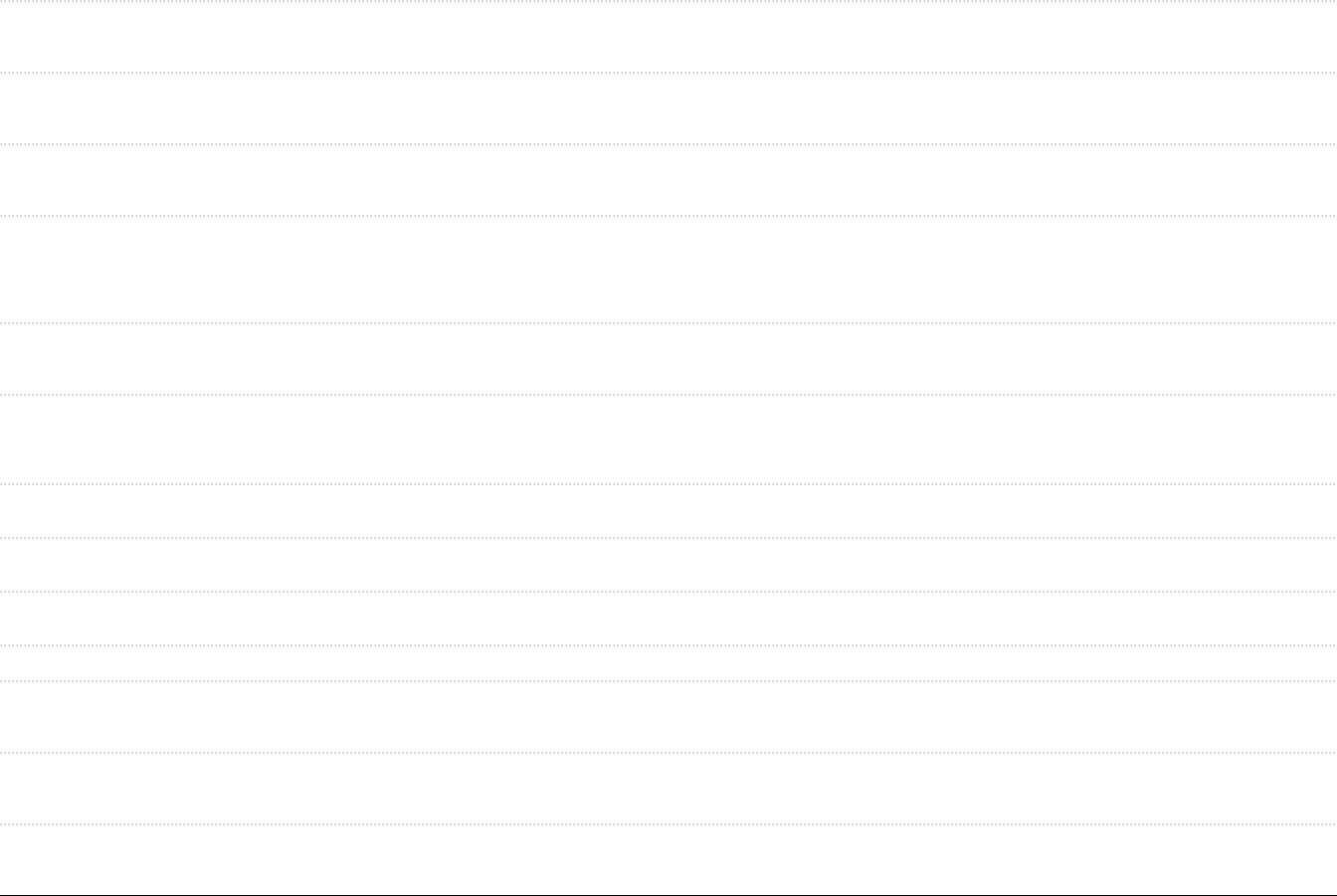
CO R-670-4, 240 hp.
N2T 4/16/42 10/11/42 262 Timm N2T-1 NAS 8/44 M/2.Land,primary trainer, plastic
Pensacola bonded plywood construction;
CO R-670-4, 229 hp.
N3N 10/26/36 1/23/42 998 NAF N3N-1, -2,-3 NAS 10/59 B/2. Land, conver’t; primary
Pensacola trainer; all fabric covered;
WAC R-760-2,235 hp.
SNC 305 Curtiss SNC-1 10/44 M/2. Land; primary trainer;
WAC R-974,420 hp, all metal
retractable landing gear.
SNJ 11/8/39 8/27/45 4024 North SNJ-1 thru -6 NAS 6/68 M/2. Land; basic trainer;
American . Pensacola first trainer with retrac-
table landing gear and
covered cockpits; 1 P&W
R-1340, 550 hp.
SNV 8/5/41 2/28/44 2000 Vultee SNV-1,-2 NAS 4/46 M/2. Land; basic trainer;
Corpus retractable landing gear;
Christi P&W R-985, 450 hp.
T-28 1/28/54 10/29/57 1175 North T-28B,T-28C NATC 4/82 M/2. Land; the first of
American Patuxent the standardized trainers
River for USAF and Navy; WAC
R-1820-86, 1425 hp.
T-34 6/28/56 6/18/84 423 Beech T-34A,T-34B,T-34C. NAS 10/93 M/2. Land; primary trainer,
Pensacola CON O-470-13, 225 hp.
T-45 4/80 100 McDonnell M/2. Land; jet trainer; RR Mk
Douglas 851 turbofan.
TO/TV 10/16/48 9/29/48 50 Lockheed TO-1/TV-1 Undeter- 10/57 M/1. Land; advanced jet
mined trainer; AL J33-A-20,5,200#.
TO/TV/T-33 11/22/49 6/28/47 698 Lockheed TO-2/TV-2/T-33 Muroc 7/74 M/2. Land.
TT 7/14/58 14 Tempco TT-1 NAAS 10/60 M/2. Land; primary jet trainer;
Saufley CON J69, 920#.
Field
T2J/T-2 2/25/59 12/18/74 519 North T2J-1; T-2A,T-2B, T-2C NATC 6/94 M/2. Land; all-purpose
American . Patuxent jet trainer; 2 GE 085-GE-4,
River 2,950# each.
T2V/T-1 12/26/57 2/14/58 150 Lockheed T2V-1/T-1A NAS 7/72 M/2. Land; deck-landing,
Pensacola advanced jet trainer;
AL J33-A-24, 6,100#.
* The dates in this column refer to either a squadron or the Navy’s aircraft inventory. If only a date is listed then it refers to the inventory.
UNITED STATES NAVAL AVIATION 1910–1995 511
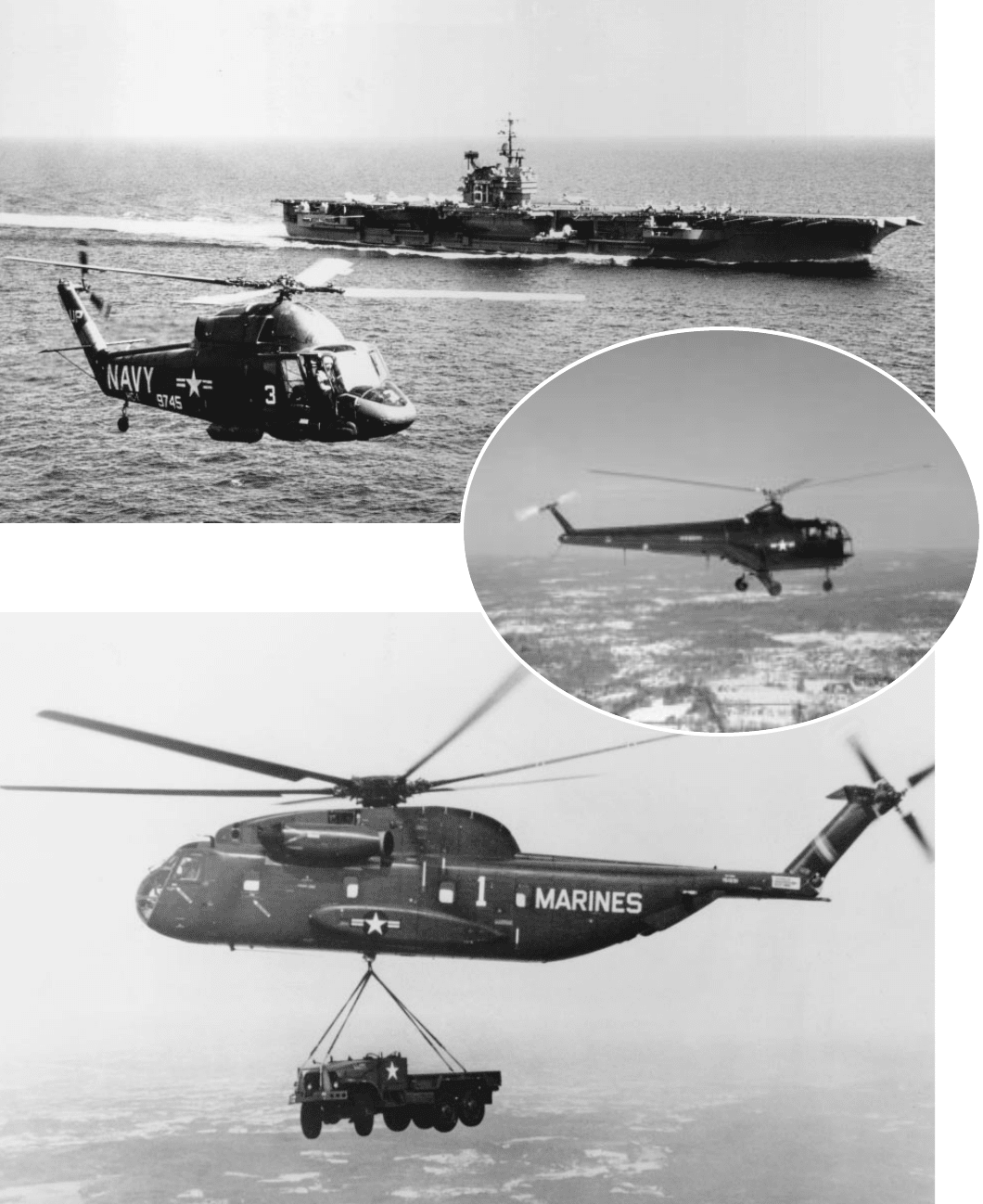
512 UNITED STATES NAVAL AVIATION 1910–1995
Marine CH-53A, Sea Stallion, lifts large Truck NH 69965
H-2 stands plane guard during flight operations K31638
HUS-1 Utility, observation
and rescue helicopter
105087
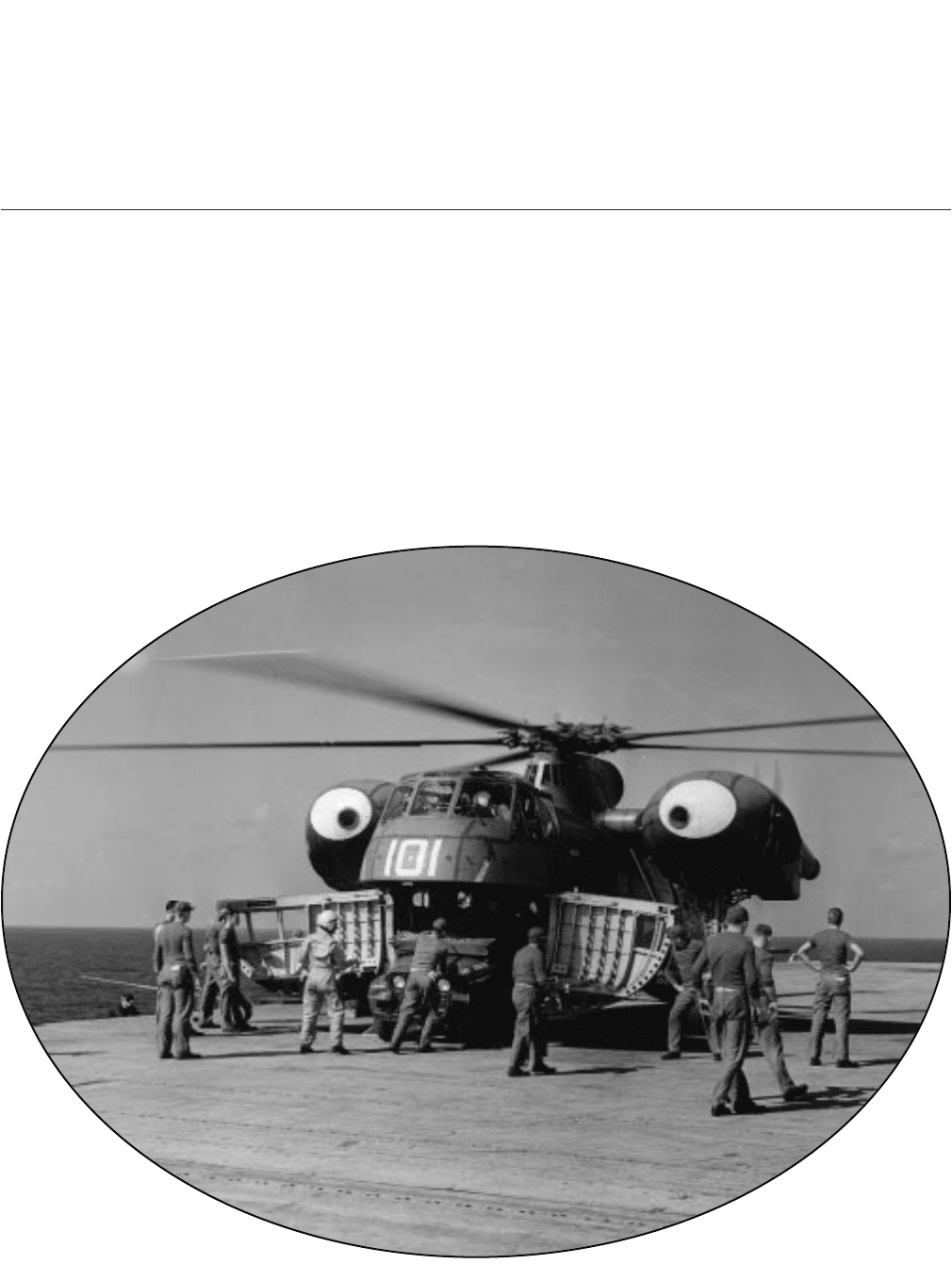
In basic organization and concept this table generally
follows the table on combat aircraft (Appendix 6); the
major difference is that these tables include practically
all helicopters with which the Navy has operated.
Because of the helicopter's capability for tethered flight
and low altitude free flight, first flight data was not
always available and was sometimes of uncertain mean-
ing. Because of this, first acceptance was used as being
somewhat analogous to first flight of a fixed wing air-
craft. Service history data is somewhat broader than for
fixed wing aircraft. To accommodate the broader scope
of models covered, assignment to experimental
squadrons (VX) is reported for models that were not
later assigned to operational units. Marine Helicopter
Experimental Squadron (HMX) is considered to be an
operational squadron. The descriptive data is generally
self-explanatory. For explanation of engine nomencla-
ture, see discussion of combat aircraft.
APPENDIX 8
Naval
Helicopters
513
A jeep is loaded aboard an
HR2S-1 (H-37) for trans-
portation ashore from the
carrier, USN-1046883.
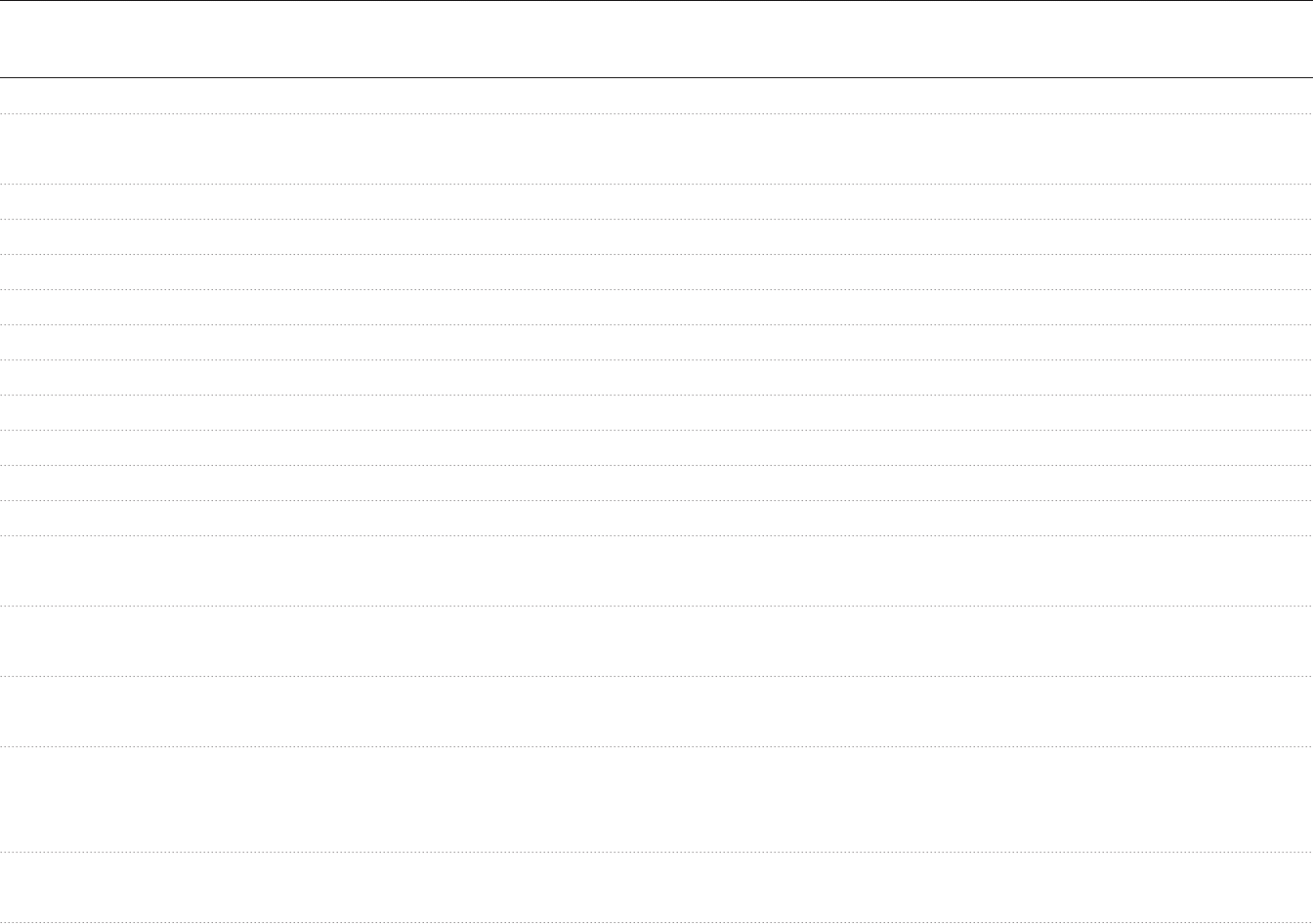
Naval Helicopter Data
Date Last
First Date Date Reported in
Aircraft Aircraft First Final Number Squadron Squadron or *
Designation Contract Acceptance Acceptance Accepted Manufacturer Models Accepted Delivery Inventory Description
DSN (Redesignatcd QH-50, see H-50)
H-1 6/14/62 2/64 1299 Bell AH-1G, -1J,-1S, -1T; -1W; 3/64 Rotor 44’D & tail rotor;
HH-1K; TH-1E, -1L; UH-1D,-1E, VMO-1 observation; one crew; 4 pass.,
-1L, -1N. LY T43, 1,150 hp.
H-2 (See HU2K for data)
H-3 (See HSS-2 for data)
H-12 (See HTE for data)
H-13 (See HTL for data)
H-19 (See HRS-3 and HO4S-3 for data)
H-23 (See HTE for data)
H-25 (See HUP-2 for data)
H-34 (See HUS and HSS-1 for data)
H-37 (See HR2S for data)
H-43 (See HUK and HOK for data)
H-46 9/29/61 5/62 01/31/77 677 Boeing HRB-1/CH-46A,-46D, -46F; 6/64 Tandem rotors, 50’D; assault
UH-46A, -46D. HMM-265 transport; 3 crew; 17
passenger; 2 GE T58, 1,250 hp.
H-50 12/31/58 3/60 10/20/69 633 (1) Gyrodyne DSN-1, -3; QH-50C, -50D. 1/23/63 1/31/71 Coaxil rotors, 20’D; ASW drone;
Buck
QH-50C/D BO T50, 300 hp in QH-50C.
(DD 761)
H-53 2/7/63 5/64 733 Sikorsky CH-53A, -53D, -53E; HH-53B, 11/2/66 Rotor 72’D and tail rotor;
-53C; RH-53D; MH-53E. HMH-463 assault transport; 38 passenger
or 4 ton; 2 GE T64, 2,850 hp.
H-57 1968 10/10/68 140 Bell TH-57A, -57B,-57C. 11/10/68 Trainer; 5 place; rotor 33’4” D
HT-8 and tail rotor 5’5”; -57C
powered by 1 Allison
250-C-20J gas turbine,
317 shp.
H-60 2/78 3/31/80 1010 Sikorsky SH-60B, -60F; HH-60A,-60S, 9/28/83 LAMPS MK III,ASW. Rotor 53’ 7”
-60J, -60H; UH-60A; VH-60A. HSL-41 D and tail rotor. 3 crew.2 GE-
401T700, 1,284 hp each.
514 UNITED STATES NAVAL AVIATION 1910–1995

HJP (XHJP-1 was prototype for HUP-1)
HNS 2/20/43 10/43 12/44 68 Sikorsky HNS-1 11/43 12/31/47 Rotor 38’D plus tail rotor; 1st
NAS New VX-3, USN helo.WR R-550, 200 hp.
York HNS-1
HOK 6/26/50 4/53 12/57 83 Kaman HOK-1 4/12/56 5/31/65 Side by side rotors, 47’D;
(H-43**) VMO-1 VMO-2, utility, 2 place; CO R-975,525 hp.
OH-43D
HOS 3/20/43 9/44 1/46 3 Sikorsky XHOS-1 10/44 1/31/48 Rotor 38’D and tail rotor;
NAS New VX-3, utility, 2-place; FR 0-435,
York HOS-1 235 hp.
102 Nash-Kel HOS-1
HO2S 6/22/43 12/45 12/45 44 Sikorsky HO2S-1 2/46 5/31/46 Rotor 48’D and tail rotor;
NAS New CGAS utility and rescue; 2 crew,
York Eliz. 2 passenger; P&W R-985,
City, 450 hp.
HO2S-1
HO3S 9/27/46 11/46 1/50 92 Sikorsky HO3S-1 12/47 11/30/54 Rotor 48’D and tail rotor;
VU-7 HU-1, utility, 4-place; P&W R-985,
HO4S-3 450 hp.
HO4S-3 4/28/50 8/50 1/58 129 Sikorsky HO4S-1,-2, -3, -3G. 12/27/50 12/31/60 Rotor 53’D and tail rotor; ASW,
(H-19**) HU-2 HU-4, observation and rescue; crew 2
HO4S-3 or 3. P&W R-1340,600 hp;
WAC R-1300,800 hp in -3.
HO5S 6/30/50 2/52 2/53 79 Sikorsky HO5S-1 7/1/52 6/30/57 Rotor 33’D and tail rotor;
VMO-1 VMO-1, observation, liaison and
H05S-1 utility; 5 place; ACM O-425,
245 hp.
HRB (Initial designation for H-46)
HRP 2/1/44 6/47 12/50 82 Piasecki XHRP-1; HRP-1, -2. 4/48 2/28/53 Tandem rotors 41’D; 1st
HU-2 HS-3, tandem conf; 2 crew, 8 pas-
HRP-1 senger, P&W R-1340,600 hp.
HRS-3 8/2/50 3/51 11/57 271 Sikorsky HRS-1, -2, -3 4/7/51 2/28/69 Rotor 53’D and tail rotor;
(H-19**) HMR-161 HC-5, assault transport; 2 crew, 10
CH-19E passenger; P&W R-1340, 600
to 800 hp.
HR2S 5/9/51 10/53 2/59 59 Sikorsky HR2S-1, -1W 3/20/57 3/31/66 Rotor 72’D and tail rotors;
(H-37**) HMR(M) HMH-462 assault transport; 2 crew, 20
-461 CH-37C passenger; 2 P&W R-2800,
2,100 hp.
HSL 6/28/50 10/53 10/56 51 Bell XHSL-1; HSL-1. 9/59 Tandem rotors, 51’6”D; ASW
search or attack; 2 or 3 crew;
P&W R-2800, 1,900 hp.
UNITED STATES NAVAL AVIATION 1910–1995 515

HSS-1 6/30/52 2/54 4/66 385 Sikorsky XHSS-1, HSS-1,SH-34J. 8/55 3/31/74 Rotor 56’D and tail rotor; ASW;
(H-34**) HS-3 UH-34D 2 to 4 crew; WAC R-1820,
1,525 hp.
HSS-2 12/24/57 3/59 11/26/75 396 Sikorsky HSS-2/SH-3A,SH-3D, HSS-2Z/ 6/61 5/96 Rotor 59’D and tail rotor; all
(H-3**) VH-3A; CH-3B, -3E. weather ASW; “sea-worthy
hull”; 4 crew, 2 GE T58, 1,050 hp.
HTE 4/17/50 5/50 8/63 108 Hiller UH-12A; HTE-1, -2. 1/19/51 10/31/52 Rotor 35’D and tail rotor;
(H-12/ HTU-1 HTU-1, training and utility, 3 place;
H-23**) HTE-2 FR O-335, 200 hp in HTE-2.
HTK 9/5/50 11/51 10/53 29 Kaman HTK-1 1/28/53 11/31/55 Side by side rotors, 40’D;
HU-2 HU-2, trainer and general utility,
HTK 3 place; LY O-435, 255 hp.
HTL 6/20/46 2/47 7/59 187 Bell HTL-1, -2,-3, -4, -5,-6, -7. 4/48 6/30/73 Rotor 35’D and tail rotor;
(H-13**) HU-2 UH-13P trainer and general utility; 2
or 3 place; ACM O-325,
178-200 hp, LY O-435, 240 hp
in -7.
HU (Redesignated H-1)
HUK 12/27/56 5/58 12/58 24 Kaman HUK-1 8/1/58 4/30/65 Side by side rotors, 50’D; cargo
(H-43**) HU-2 VMO-2, and rescue; 2 crew, 3 pas-
UH-43C senger; P&W R-1340, 600 hp.
HU2K 11/29/57 4/59 4/28/93 256 Kaman HU2K-1/UH-2A, -2B; SH-2F, -2B. 12/18/62 6/94 Rotor 44’D and tail rotor;
(H-2**) HU-2 2 crew,4 passenger; GE T58,
1,050 hp; tandem engines
prototyped in a -2B.
HUL 4/2/55 11/55 3/59 30 Bell HUL-1, -1G 1/7/57 6/30/73 Rotor 37’D and tail rotor;
(H-13**) HU-2 UH-13P transport and utility; 1 crew,
3 passenger, LY O-435, 240 hp.
HUP-2 2/8/46 1/49 6/54 476 Piasecki XHJP-1; HUP-1, -2, -2S; H-25A. 1/11/51 8/31/64 Tandem rotors, 35’D; ASW and
(H-25**) HU-2 VU-1, utility; 3 crew, 4 passenger, CO
HU-1, R-975, 550 hp.
UH-25B
HUS 10/15/54 1/57 12/30/68 549 Sikorsky HUS-1/UH-34D; HUS-1A,-1G, 2/5/57 3/31/74 Rotor 56’D and tail rotor; cargo
(H-34**) -1Z; CH-34A, -34C. HMR(L) UH-34D transport; 2 crew,12 passenger
-363 or 2 ton of cargo; WAC R-1820,
1,525 hp.
K-225 9/26/49 3/50 6/50 3 Kaman K-225 (K-5) 6/20/50 5/55 Side by side rotors 40’D;
NAS LY O-435, 225 hp.K-5 was
Patuxent first turbine powered helo;
River BO-502 turbine, 175 hp.
R-4 (HNS-1 obtained from Army,YR-4 and YR-4B; Sikorsky model VS-316A)
R-5 (HO2S obtained from Army)
R-6 (HOS-1 obtained from Army, R-7A and B)
* Dates in this column through 1969 refer to squadrons.After 1969, these dates refer to inventory.
** This is the new designation assigned the helicopter in 1962.
516 UNITED STATES NAVAL AVIATION 1910–1995

that began with 00. The double zeros were part of the
bureau number. These numbers obviously do not fit
into the regular six digit numbering system that began
with 100001. Documentation has not been found that
explains why the normal six digit numbering system
was not employed for these aircraft.
The other major exception to the normal sequential
assignment of bureau numbers in the six digit system
involves numbers beginning with 198003 and ranging
up to 999794. This group of six digit numbers is not
sequentially assigned. Almost all of the aircraft in this
group of numbers were acquired by the Navy from
the Army, Air Force, or other organizations, not direct-
ly from the manufacturer. There appears to be no logi-
cal sequence or reasoning for the assignment of these
six digit numbers. It is believed that some of the num-
bers may have been dervied by modifying the Air
Force aircraft numbering system. However, this is only
conjecture since there is no documentation to verify
this explanation.
Aside from the very sizable overlap stemming from
the numbering schemes, the same number was never
used on more than one aircraft. During the planning
and contracting processes, however, numbers were
often assigned to aircraft that were never obtained.
Sometimes, but by no means always, these cancelled
numbers were reassigned to other aircraft.
The basic sources used in compiling the following list
include a master “Serial List of Designating Numbers for
Naval Aircraft” prepared by the aircraft records office in
the Bureau of Aeronautices. It was typed on twelve 17
1
⁄2
inch by 21
1
⁄2 inch pages and numbered consecutively 0
through 11. It was probably put in that form in 1935
when the first significant handwritten emendations
appeared. Page 0 covered the pre-1916 schemes and
pages 1 through 11 began with A-51 and ran through
all four digit serials. For later aircraft, primarily those in
the six digit system, the bureau number listing was
compiled by using the “List of Serial Numbers Assigned
Navy Aircraft” developed by the Aviation Statistics
Office of DCNO (Air) and by reviewing the Aircraft
History Card microfilm collection.
The compilations have been cross-checked against
the compilation in William T. Larkins, U.S. Navy
Serial number and bureau number are synonymous
terms for the identifying number assigned to individu-
al naval aircraft. The earliest system was a letter–num-
ber combination which segregated the aircraft by man-
ufacturer (or designer) and general type. As this
scheme developed, the letter “A” was used with
Curtiss hydroaeroplanes, “B” for Wright type
hydroaeroplanes, “C” for Curtiss flying boats, “D” for
Burgess flying boats, and “E” for Curtiss amphibian fly-
ing boats. Sequential numbers beginning with one,
were assigned to each set of aircraft. That scheme was
replaced by AH numbers which were assigned aircraft
in service. A system of construction numbers was then
initiated to identify aircraft on order. The two coexist-
ed for some 15 months when the service numbers
were abandoned (See 27 Mar 1914, 10 Feb 1916, and
19 May 1917, chronology entries).
Construction numbers began with A-51 and, as seri-
al numbers or bureau numbers, ran through A-9206
after which the letter “A” was dropped although
sequential numbering continued through 9999. A sec-
ond series of four digit numbers began with 0001 and
ran through 7303. The last number in this series was
assigned in December 1940. Beginning in 1941 a
series of five digit numbers, beginning with 00001 was
adopted and numbers were assigned through 99999,
with 99991-100000 cancelled. A sixth digit numbering
system was then added beginning with 100001 and is
still in use. To summarize, the five major numbering
systems are as follows:
A-51 to A-9206
9207 to 9999 (the A prefix was dropped)
0001 to 7303
00001 to 100000 (99991-100000 were cancelled)
100001 to present (still in use but with many
modifications)
There are several major exceptions to the assign-
ment of numbers in the six digit numbering system. In
the 1960s a block of six digit numbers, beginning with
00, were assigned to the DASH vehicle (Drone
Antisubmarine Helicopter). The original designation
for the unmanned helicopter was DSN. Production
models of the DSN were designated QH-50C and QH-
50D. All of these helos had six digit bureau numbers
UNITED STATES NAVAL AVIATION 1910–1995 517
517
APPENDIX 9
Bureau (Serial) Numbers
of Naval Aircraft
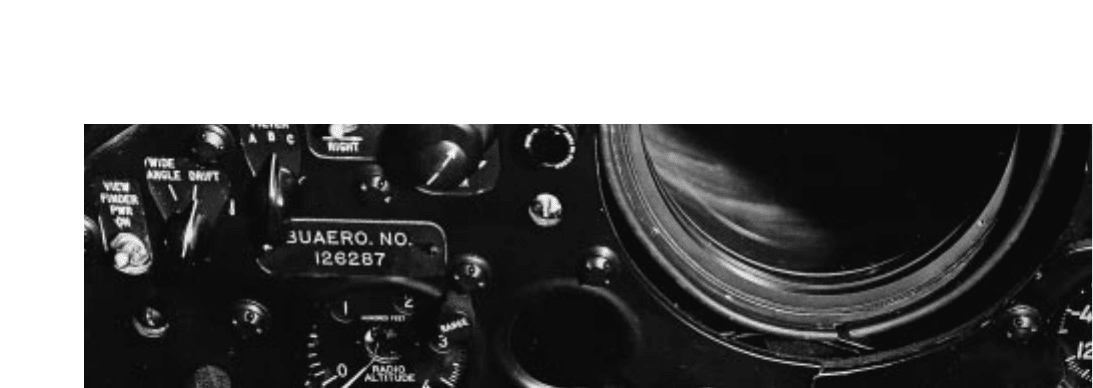
Aircraft 1921–41; a compilation made by William H.
Plant, Librarian, Naval Air Systems Command; and a
more comprehensive listing compiled by Jack Collins,
a historian and specialist in bureau numbers. Monthly
and quarterly reports on the status of aircraft produc-
tion, Aircraft History Cards, and the Aircraft Strike
Listing were used in reconciling discrepancies.
One problem is that interpretations do not show in
the final list. In addition, the compiler makes no claim
to infallibility in transcribing long lists of numbers and,
as a result, may have unwittingly introduced errors not
in the original compilations.
The Early Designation Systems are as followings:
The First System from 1911–1914
A-1 Curtiss hydroaeroplane (originally an amphibian)
A-2 Curtiss landplane, rebuilt as hydroaeroplane. It
was again rebuilt as a short-hulled flying boat various-
ly described as OWL for over-water-land or as a Bat
boat, and was fitted with wheels for use as an
amphibian. This was recorded in the aircraft log for
November 25, 1913: “title by order of Captain
Chambers [was] changed [to] E-1.”
A-3 Curtiss hydroaeroplane, received summer of 1912.
A-4 Curtiss (or Curtiss type) hydroaeroplane
B-1 Wright landplane, converted to hydroaeroplane
B-2 Wright type hydroaeroplane, built from spares,
October 1912
B-3 Wright type hydroaeroplane, built from spares,
October 1913
C-1 Curtiss flying boat
C-2 Curtiss flying boat
C-3 Curtiss flying boat
C-4 Curtiss flying boat
C-5 Curtiss flying boat
D-1 Burgess Co. & Curtis flying boat
D-2 Burgess Co. & Curtis flying boat
E-1 OWL or short hulled amphibious flying boat
(see A-2)
The Second Designation System, 1914–1916
AH designations
General Order No. 88 of 27 March 1914 listed the
corresponding designations between the above desig-
nations and the new system: “The aeroplanes now in
the service are hereby designated as follows:
New Designation Old Designation
AH-1 A-1
AH-2 A-2
AH-3 A-3
AH-4 B-1
AH-5 B-2
AH-6 B-3
AB-1 C-1
AB-2 C-2
AB-3 C-3
AB-4 C-4
AB-5 C-5
AB-6 D-1
AB-7 D-2
AX-1 E-1”
Despite the phrase, “now in the Service,” the A-1, B-
1, B-2 and probably the D-1 had ceased to exist
before the order was issued. Other records show AH-2
as redesignation for A-4.
The designation of follow-on aircraft was as follows:
AH-7 Burgess-Dunne hydroaeroplane
AH-8 Curtiss hydroaeroplane
AH-9 Curtiss hydroaeroplane
AH-10 Burgess-Dunne hydroaeroplane
AH-11 Curtiss hydroaeroplanc
AH-12 Curtiss hydroaeroplane
AH-13 Curtiss hydroaeroplane
AH-14 Curtiss hydroaeroplane
AH-15 Curtiss hydroaeroplane
AH-16 Curtiss hydroaeroplane
AH-17 Curtiss hydroaeroplane
AH-18 Curtiss hydroaeroplane
518 UNITED STATES NAVAL AVIATION 1910–1995
A plate with the Bureau Number of the aircraft is shown in the upper left hand section of the F9F-5P instrument panel. 480229

The following listings are the five major post 1916 aircraft numbering systems:
Bureau
Number Aircraft Type Manufacturer Notes
A-51 Seaplane Wright
A-52 Seaplane Paul Schmitt Paris
A-53 Seaplane DWF,German
A-54-56 Hydro-pusher Burgess Co.
A-57-58 Seaplane Thomas Bros. AH-20 and 21
A-59 Seaplane Gallaudet D-1 (AH-61)
A-60-65 Hydroaeroplane Curtiss
A-66-67 R-3 Curtiss AH-65 & AH-62
A-68-69 Seaplane Martin AH-19 and 22
A-70-75 Tractor Burgess AH-25 to 31
Seaplane
A-76-81 Seaplane Sturtevant A-76 was AH-24
A-82 Richardson Wash.Navy Yard Seaplane
A-83-84 Hydroaeroplane Pensacola Curtiss type from spares
A-85-90 Seaplane Curtiss
A-91 Seaplane Standard
A-92 Seaplane Standard Twin engine,cx
A-93 JN Twin Tractor Curtiss Seaplane
A-94-95 BC-2 and 3 Goodyear Kite Balloon
A-96-125 N-9 Curtiss
A-126-127 Seaplane Farman A-127 cx
A-128-133 Seaplane Sturtevant
A-134-136 SH-4 Thomas-Morse Seaplane
A-137-139 H-4-H Standard
A-140-141 Seaplane Thomas Bros. Twin tractor, cx
A-142-144 Seaplane Aeromarine
A-145-146 Flying Boat Curtiss Cx
A-147-148 Seaplane Pacific Aero. Boeing
A-149-150 Speed Scout Curtiss Seaplane
A-151 BC-4 Goodyear Kite Balloon
A-152 H-12 Curtiss Flying Boat
A-153-154 Seaplane,experimental NAS Pensacola A-154 cx
A-155-156 HT-2 Seaplane Burgess Speed Scout
A-157-159 JN-4B Curtiss
A-160-161 Kite Balloon Goodyear
A-162-197 R-6 Curtiss
A-198 JN,Twin Engine Curtiss
A-199-200 Speed Scout Burgess Cx
A-201-234 N-9 Curtiss
A-235-243 B Class Airship Goodyear
A-244-248 B Class Airship Goodrich
A-249-250 B Class Airship Connecticut A/c
A-251 Free Balloon Connecticut A/c
A-276-287 Kite Balloon Goodyear
A-288-290 Seaplane Wright-Martin
A-291-293 L-2,Triplane Curtiss
A-294-295 Unknown Unknown Cx
A-296-297 Seaplane General/Verville Cx
A-298-299 Unknown Unknown Cx
A-300-301 Seaplane Gallaudet Cx
A-302-341 R-6 Curtiss
UNITED STATES NAVAL AVIATION 1910–1995 519

Bureau
Number Aircraft Type Manufacturer Notes
A-342-371 N-9 Curtiss
A-372-373 Kite Balloon Goodyear
A-374-379 HT-2 Burgess Speed Scout
A-380-385 U-2 Seaplane Burgess
A-386-387 F-Boat Curtiss
A-388-389 JN-4 Curtiss
A-390-393 F-Boat Curtiss
A-394 Sopwith British Seaplane
A-395-406 SH-4 Seaplane Thomas-Morse
A-407 Sopwith British Adm. Seaplane
A-408 F-Boat Curtiss
A-409-438 N-9 Burgess
A-439-441 Seaplane Aeromarine
A-442-444 Seaplane Loening Lawrance two
cylinder engine
A-445-449 GS-2 Gnome Curtiss Gnome Speed Scout
A-450-649 39 A and B Aeromarine Seaplanes
A-650-699 Type C Boeing Seaplane
A-700 Kite Balloon Goodyear
A-701 Kite Balloon Goodrich
A-702-726 Kite Balloon Goodyear
A-727-751 Kite Balloon Goodrich
A-752-756 F Boat L. S.Thompson
A-757-762 S-5 Thomas-Morse
A-763-764 Caquot M British Gov’t Kite Balloon
A-765-783 H-12 Curtiss
A-784-799 H-16 Curtiss
A-800-815 HS-1 Curtiss A-815 cx
A-816-817 Caquot P French Gov’t Kite Balloon
A-818-867 H-16 Curtiss
A-868 GS-1, Gnome Curtiss Speed Scout
A-869-872 Sopwith Baby British Gov’t Seaplane
A-873-891 R-9 Curtiss
A-892-893 R-6 Curtiss
A-894 R-9 Curtiss
A-895 R-6 Curtiss
A-896-909 R-9 Curtiss
A-910 R-6 Curtiss
A-911-918 R-9 Curtiss
A-919-920 R-6 Curtiss
A-921-924 R-9 Curtiss
A-925 R-6 Curtiss
A-926-955 R-9 Curtiss
A-956 R-6 Curtiss
A-957 R-9 Curtiss
A-958-959 R-6 Curtiss
A-960-962 R-9 Curtiss
A-963-966 R-6 Curtiss
A-967-969 R-9 Curtiss
A-970 R-6 Curtiss
A-971-975 R-9 Curtiss
A-976 R-6 Curtiss
520 UNITED STATES NAVAL AVIATION 1910–1995
